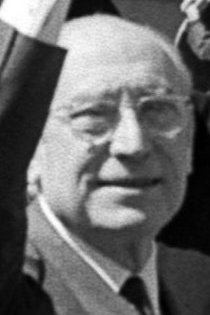Registered 2,382,260 0.1% 25 seats, 39.5% Did not stand 30 23 | 1979 1983 Did not stand 9 seats, 14.7% Date 8 May 1983 | |
 | ||
Turnout 1,652,621 (69.4%)
3.4 pp | ||
The 1983 Madrid City Council election was held on Sunday, 8 May 1983, to elect the 2nd Madrid City Council, the unicameral local legislature of the municipality of Madrid. At stake were all seats in the City Council, determining the Mayor of Madrid. The number of members decreased from 59 to 57 compared to the previous election.
The Spanish Socialist Workers' Party (PSOE) won with an absolute majority of 30 seats and 48.7% of the vote, the only time in history it has done so. The People's Coalition, the electoral alliance led by the People's Alliance (AP) and including the People's Democratic Party (PDP) and the Liberal Union (UL), consolidated its gains made in the 1982 general election and emerged as the second political force in the city, with 38.0% and 23 seats. Meanwhile, the Communist Party of Spain (PCE) vote fell as a result of PSOE's growth, losing over half of its seats and obtaining 4.
The Union of the Democratic Centre (UCD) had collapsed in the October general election, and was disbanded in early 1983. Several UCD split parties such as Liberal Democratic Party (PDL) or former Prime Minister Adolfo Suárez' Democratic and Social Centre (CDS) stood in this election, but failed to win any seats.
As a result of the election, Enrique Tierno Galván, was re-elected as Mayor of Madrid for a second term in office. Tierno Galván would die halfway throughout his term of natural causes, being substituted by party colleague Juan Barranco.
Electoral system
The number of seats in the Madrid City Council was determined by the population count. According to the municipal electoral law, the population-seat relationship on each municipality was to be established on the following scale:
Additionally, for populations greater than 100,000, 1 seat was to be added per each 100,000 inhabitants or fraction, according to the most updated census data, and adding 1 more seat if the resulting seat count gives an even number. As the updated population census for the 1983 election was 3,158,818, the Madrid City Council size was set to 57 seats.
All City Council members were elected in a single multi-member district, consisting of the Madrid municipality, using the D'Hondt method and a closed-list proportional representation system. Voting was on the basis of universal suffrage in a secret ballot. Only lists polling above 5% of valid votes in all of the municipality (which include blank ballots—for none of the above) were entitled to enter the seat distribution.
The Spanish municipal electoral law established a clause stating that, if no candidate was to gather an absolute majority of votes to be elected as mayor of a municipality, the candidate of the most-voted party would be automatically elected to the post.
